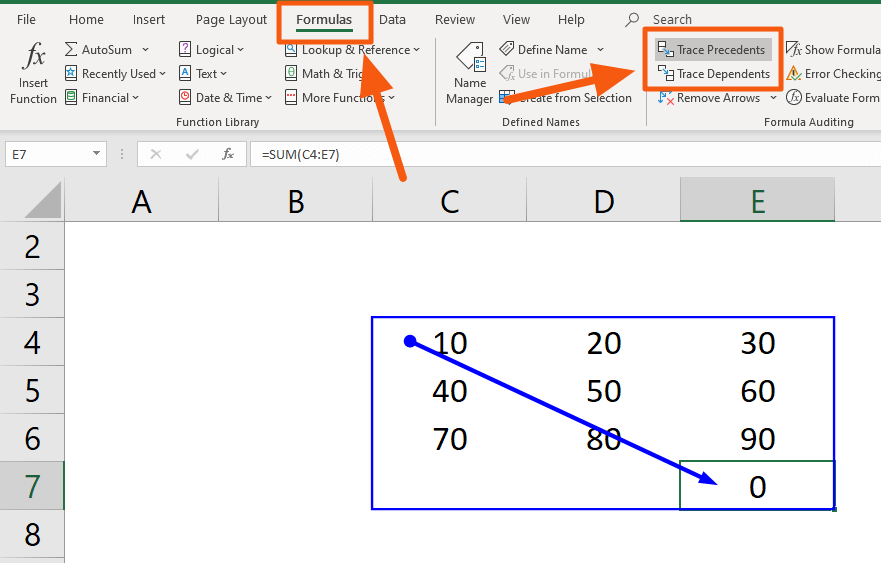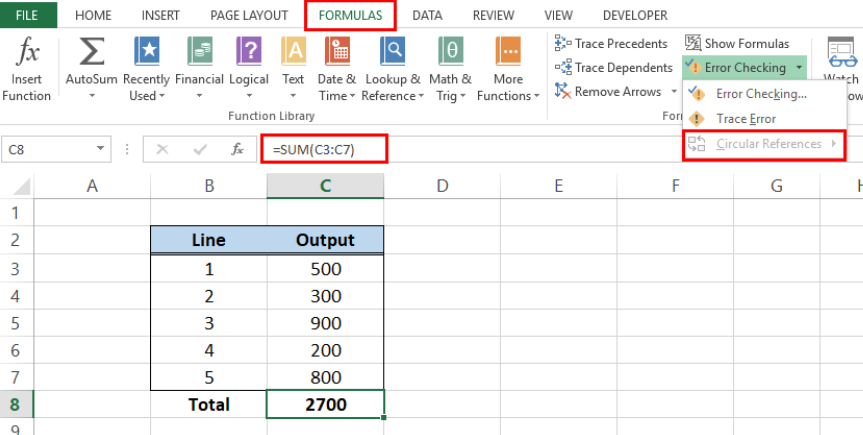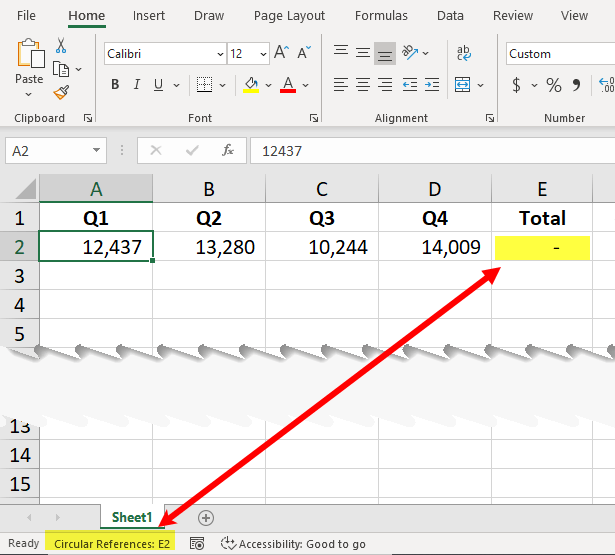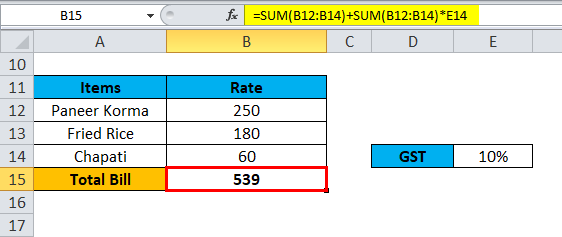
- Turn Off Circular Reference Warning In Excel
- Find Circular Reference In Excel
- Excel Turn Off Circular Reference Notification
- Turn Off Circular Reference In Excel 365
- Turn Off Circular References In Excel
A circular reference occurs when a cell in an Excel 2010 worksheet refers to itself, whether directly or indirectly. For example, if =100+A2 is entered into cell A2, then a direct circular reference has been created. An indirect circular reference is when the formula in a given cell refers to one or more other cells. Oct 16, 2018 When you turn on iterative calculations without changing the values for maximum iterations or maximum change, Excel stops calculating after 100 iterations, or after all values in the circular reference change by less than 0.001 between iterations, whichever comes first.
Turn Off Circular Reference Warning In Excel
Circular references and calculation settings
Go through one by one and fix this issue. Enable Iterative Calculation: Iterative calculation is the process of recalculating repeatedly till the specific condition is met. In Excel, by default Iterative Calculations are turned off. Circular References works when these are enabled in Excel. So, follow below steps to enable Iterative. How To Turn Off Circular Reference In Excel For Mac Gta 2 For Mac Download. If that doesn't help, check for firewall software on your PC and turn it off.

If you want to work with circular references, the calculation settings of Excel are very important. This page gives you some pointers!

Select the cells in question and turn on text wrapping (FormatCellsAlignmentWrap Text). Now select the row (s) in question and manually set the row height, by right clicking the row number and selecting 'Row Height'. Check the height of an adjacent row for a good value. Your cells will now not spill over either horizontally or vertically.

Calculation settings
The first thing that needs to be done if you want to assure your model works, is to turn on iterative computation of the file.
Find Circular Reference In Excel
Iteration settings in Excel 2010
It is up to you to decide how many iterations you want Excel to do before it stops, or what precision you need before Excel stops (whichever comes first). As soon as you check the box 'Enable Iterative calculation', Excel will do a calculation of your model. After saving the file, if you open the file again you should no longer get the circular reference warning message.
If you are troubleshooting your calculation, set Maximum Iterations to 1. This gives you the opportunity to step through the calculations one at the time by repeatedly hitting the F9 key.
Which calculation settings apply
I often get this question: I have checked the 'Enable Iterative calculation' box on my file. Why do I still get the circular reference warning? To be able to understand what causes this it is important to know how Excel handles its calculation settings.
Application wide settings
Calculation settings are application-wide. That is, if workbook A needs manual calculation and workbook B needs automatic calculation and you have both workbooks open, Excel's current setting will apply to both workbooks. The same goes for the iterative calculation settings: they apply to all workbooks in your Excel session.
When you save a workbook, whichever calculation setting was applied at that time is saved with the workbook.
First-come first-serve
Excel will apply the calculation settings of the first workbook you open in a session. So if you first open workbook A (which had iteration disabled when it was last saved) and then Workbook B (with iteration enabled when it was last saved), Excel will keep iteration disabled. This explains why you do get the circular reference warning on that workbook.
Warning: When you save your workbook, the calculation settings that are currently in effect are saved with the file. This means that if you have previously set up iterative calculation and the max iterations and max change, these settings may be overwritten with the current settings.
Making sure you have the calculation settings you need
There are several ways to ensure your workbook calculates as expected:
Always open as the first workbook
Well, that one is obvious enough. Of course if your model is used by other people as well, this is not exactly fool-proof. Your users would have to be made aware of this situation, but chances are very high your calculation settings will get overwritten at some point, making your model unreliable. And even if you're the sole user, this is a big risk.
Excel Turn Off Circular Reference Notification
Use a bit of VBA to control calculation settings
A more reliable way to control the calculation settings is by adjusting them when your workbook loads. This means you will have to add macro's to your file, but this is straightforward enough.
I assume the file with the circular references is already open.
Open its ThisWorkbook module by double-clicking on it in the project explorer as shown below:
The Project explorer in the VBA Editor
Paste this code into the code window that opens up and modify the calculations settings so they match what you need.
Turn Off Circular Reference In Excel 365
PrivateSub Workbook_Open()
With Application
.Calculation = xlCalculationAutomatic
.Iteration = True
.MaxIterations = 100
.MaxChange = 0.001
EndWith
EndSub
Now save your file (if you are using Excel 2007 or up, make sure you change the file-type to one that can hold macro's, otherwise the macro code is discarded after you close your file!)
